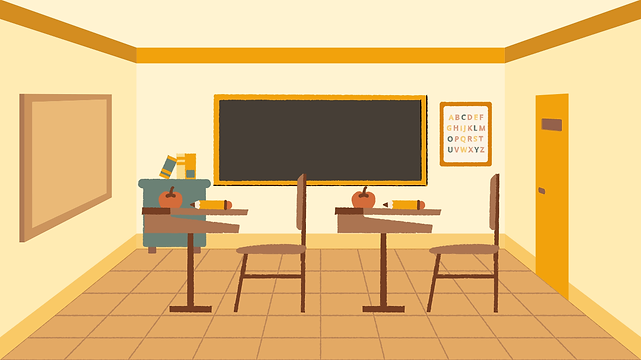top of page
How to Address Bullying in Special Education
Teaching Students with Special Needs

How to Address Bullying in Special Education
30 Ideas to Address Bullying in Special Education (Inspired by Books and Research)
As an experienced teacher, I've seen firsthand the devastating impact bullying can have, especially on students with disabilities. It's a complex issue that requires a multifaceted approach. This article offers 30 evidence-based ideas to address bullying in special education, drawing inspiration from books, research, and best practices.
Understanding and Prevention
- Educate staff and students: We need to equip everyone with the knowledge to understand disability awareness, bullying prevention, and appropriate responses to incidents. (Based on: Olweus Bullying Prevention Program)
- Promote positive school climate: Building a school culture that celebrates diversity and encourages kindness, respect, and empathy is key. (Based on: The Social-Emotional Learning Framework)
- Develop clear anti-bullying policies: We need clear, consistent rules and consequences specifically addressing bullying behavior, especially for students with disabilities. (Based on: The National Center for Learning Disabilities)
- Implement evidence-based bullying prevention programs: Programs like Olweus, Second Step, or Steps to Respect can proactively address bullying behaviors. (Based on: Research on Bullying Prevention Programs)
- Create a safe space for reporting: Make sure students feel comfortable reporting bullying incidents through accessible and confidential channels. (Based on: The National Education Association)
- Encourage open communication: Create opportunities for open conversations about bullying concerns between students, teachers, and parents. (Based on: The National Association of School Psychologists)
- Implement peer mediation programs: Train students to mediate conflicts peacefully, fostering positive relationships. (Based on: Research on Peer Mediation)
Supporting Students with Disabilities
- Provide individualized support: Develop personalized plans addressing potential vulnerabilities and providing resources to build self-esteem and social skills. (Based on: The Individuals with Disabilities Education Act (IDEA))
- Develop social skills training: Offer targeted training to help students navigate social situations, build friendships, and manage conflict. (Based on: Social Skills Training for Students with Disabilities)
- Promote self-advocacy skills: Empower students to advocate for themselves and their needs, boosting confidence and assertiveness. (Based on: The National Disability Rights Network)
- Create peer support networks: Connect students with disabilities with peers who can offer support, friendship, and understanding. (Based on: Research on Peer Support Networks)
- Collaborate with families: Work closely with families to understand their child's unique needs and provide support and resources. (Based on: Family-School Partnerships in Special Education)
- Address underlying issues: Identify and address issues like anxiety, depression, or learning difficulties that might contribute to bullying. (Based on: Mental Health Services for Students with Disabilities)
Intervention and Response
- Investigate all bullying incidents: Take all reports seriously, conducting thorough investigations and documenting information. (Based on: The National Center for Educational Statistics)
- Implement appropriate consequences: Apply consistent and fair consequences for bullying behavior, ensuring accountability. (Based on: Research on Bullying Consequences)
- Provide restorative justice practices: Use practices focusing on repairing harm, promoting empathy, and fostering reconciliation. (Based on: Restorative Justice in Schools)
- Offer counseling and support services: Provide access to counseling and support for students who have been bullied, helping them cope and build resilience. (Based on: The American Psychological Association)
- Foster positive relationships: Encourage positive interactions, promoting understanding, acceptance, and friendship. (Based on: Positive Behavioral Interventions and Supports (PBIS))
Building Inclusive Communities
- Celebrate diversity and inclusion: Create an environment that values and celebrates diversity, fostering a sense of belonging and respect. (Based on: The Diversity and Inclusion Framework)
- Promote empathy and understanding: Encourage students to understand perspectives of others, particularly those with disabilities. (Based on: Social-Emotional Learning)
- Use inclusive language: Model and encourage inclusive language that avoids stereotypes and promotes respect. (Based on: Inclusive Language Guidelines)
- Integrate students with disabilities: Ensure full integration into all aspects of school life, promoting inclusion and participation. (Based on: The Least Restrictive Environment (LRE))
- Provide leadership opportunities: Give students with disabilities opportunities to lead and contribute, fostering empowerment and belonging. (Based on: Student Leadership Programs)
Addressing Specific Bullying Behaviors
- Address cyberbullying: Educate students about online safety and responsible digital citizenship. (Based on: The National Center for Missing and Exploited Children)
- Address physical bullying: Implement strategies like supervision, conflict resolution, and appropriate consequences. (Based on: School Safety Plans)
- Address verbal bullying: Teach students how to identify and respond to verbal bullying, promoting assertiveness. (Based on: Assertiveness Training Programs)
- Address social exclusion: Encourage inclusive social activities and provide strategies for navigating social situations and building connections. (Based on: Social Skills Training for Students with Disabilities)
Ongoing Evaluation and Improvement
- Conduct regular surveys and assessments: Gather data on bullying incidents and student perceptions to monitor trends and evaluate interventions. (Based on: School Climate Surveys)
- Engage in continuous professional development: Provide ongoing training and support for staff on addressing bullying and promoting best practices. (Based on: Professional Development for Educators)
- Collaborate with community partners: Partner with local organizations to provide additional resources and support for students and families. (Based on: Community Partnerships in Education)
Remember, this list is a starting point. It's crucial to tailor interventions to specific contexts, student needs, and school policies.
bottom of page